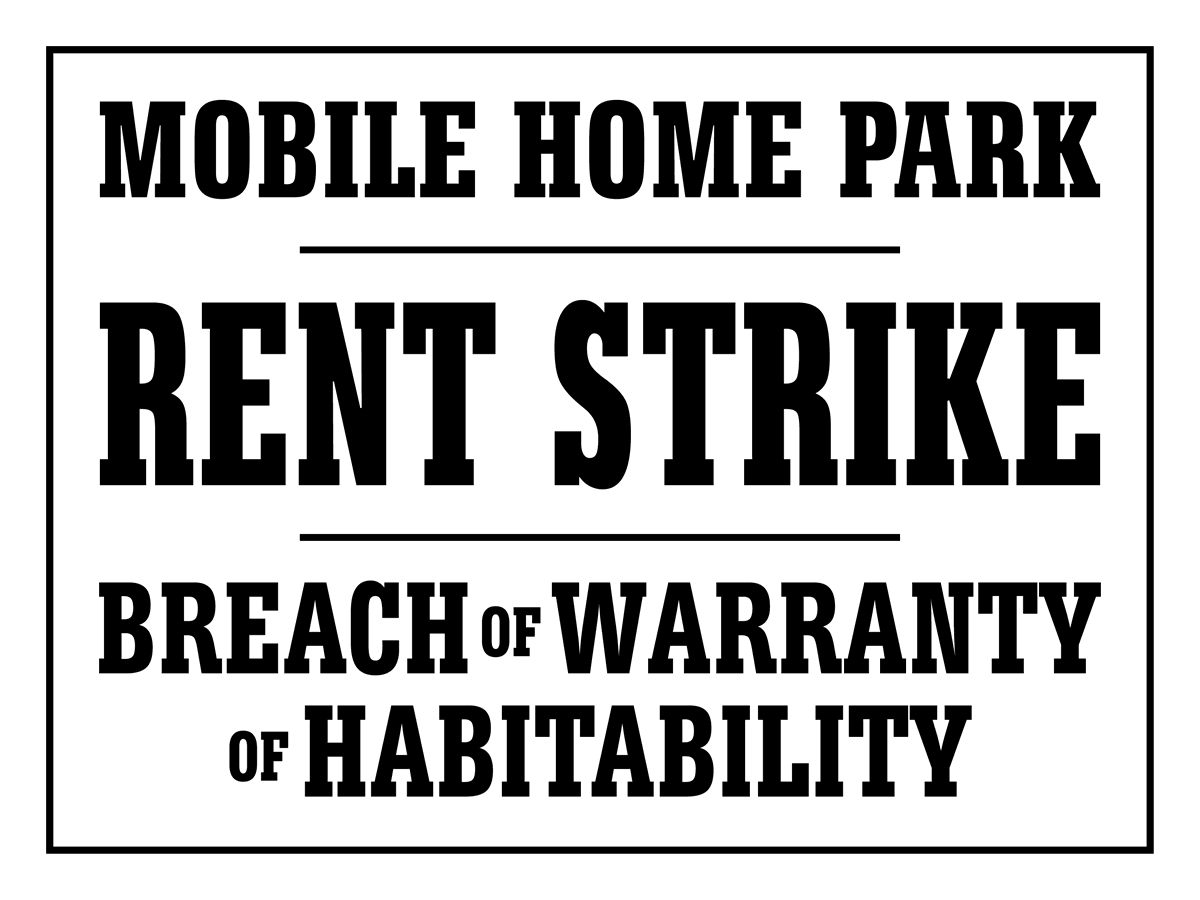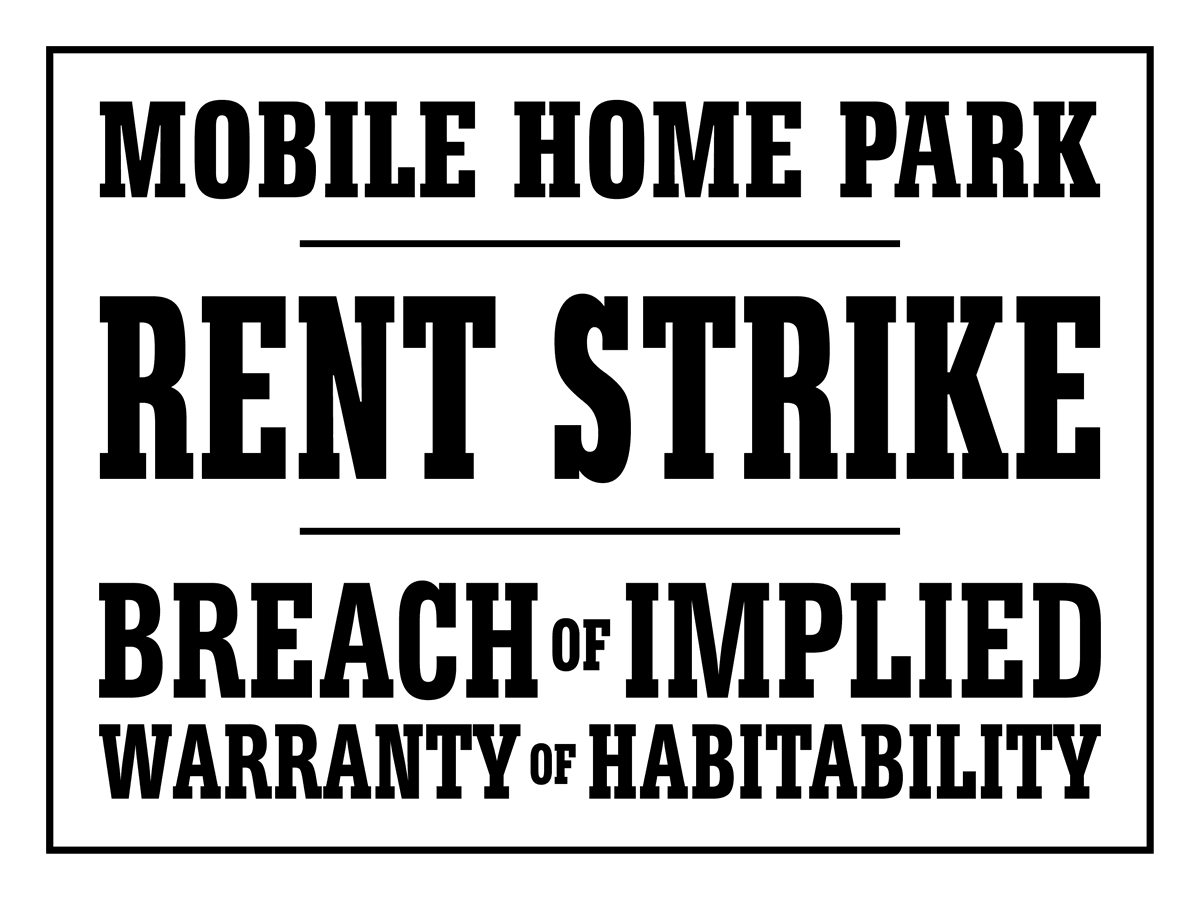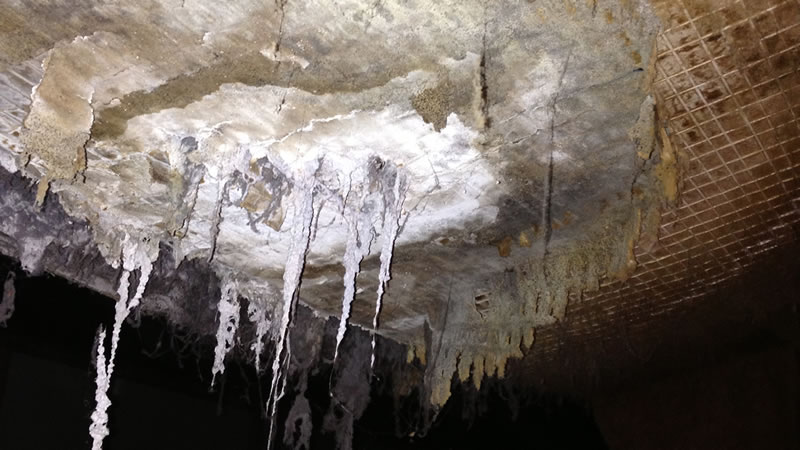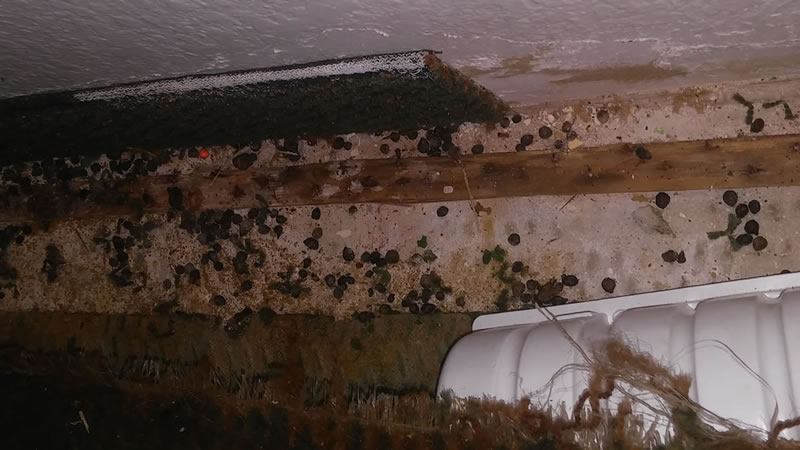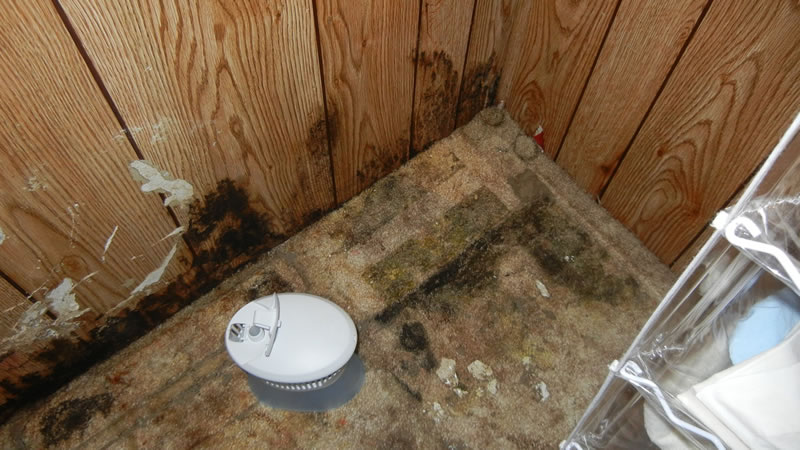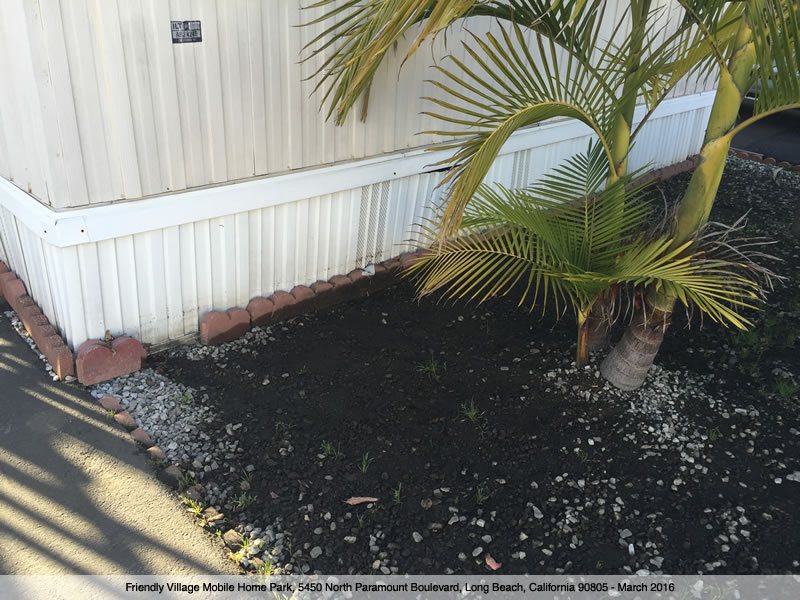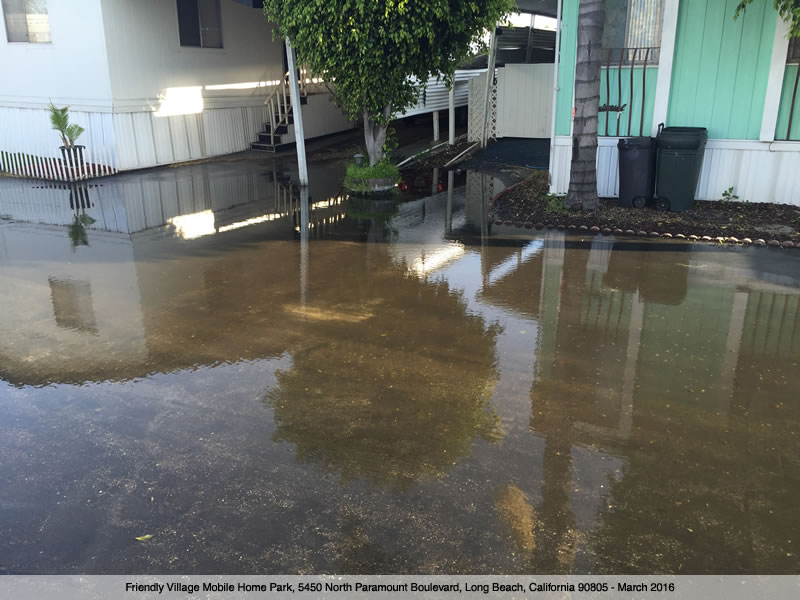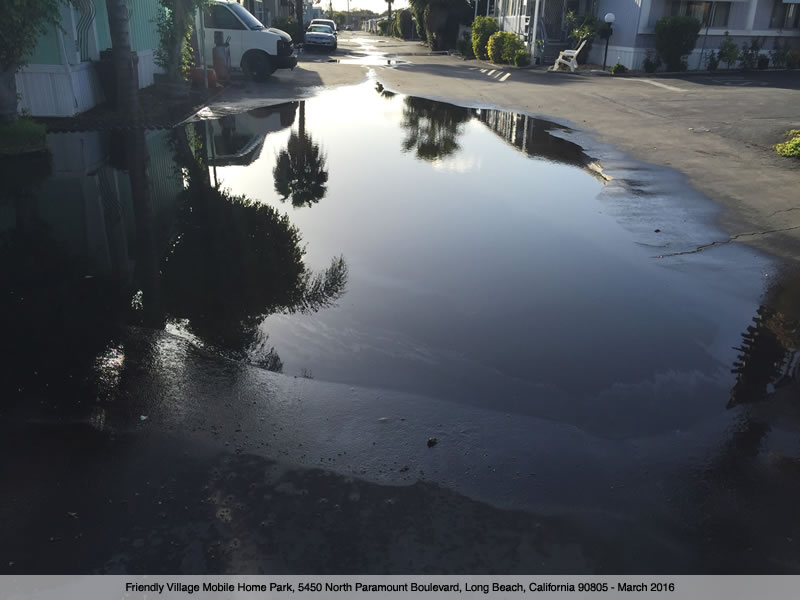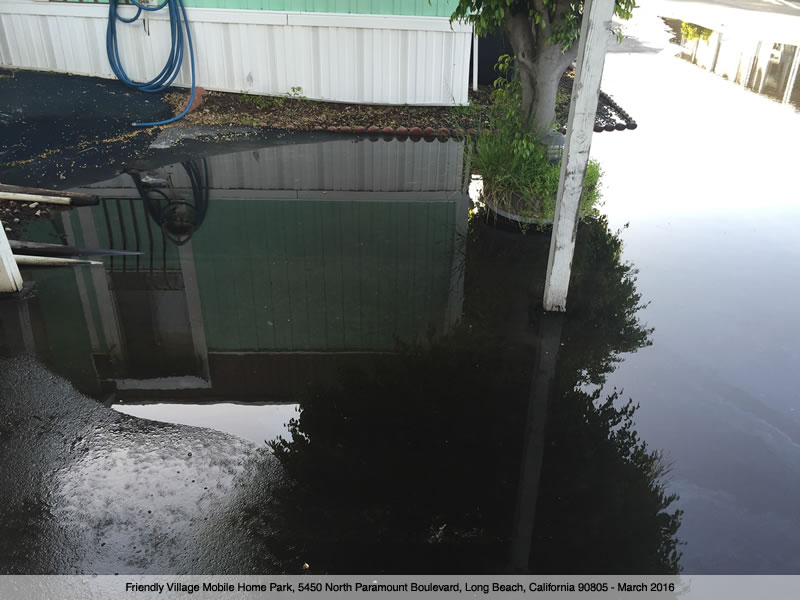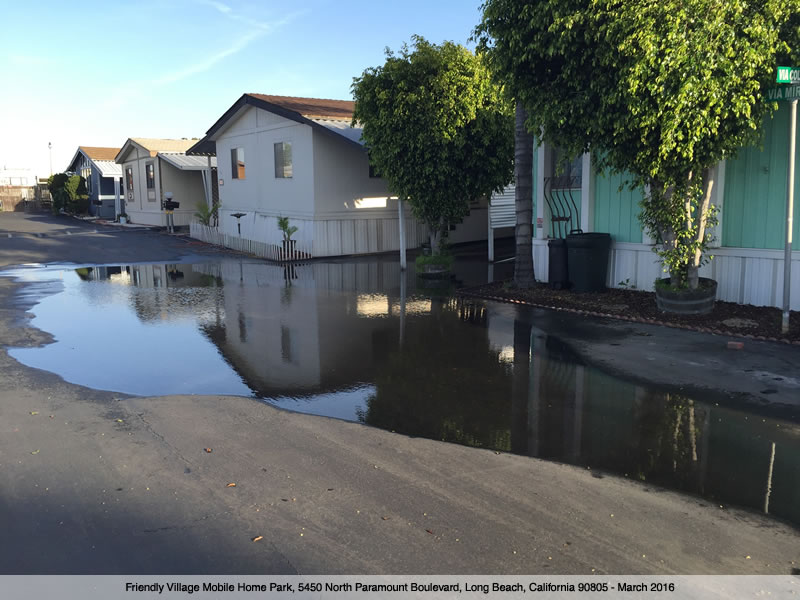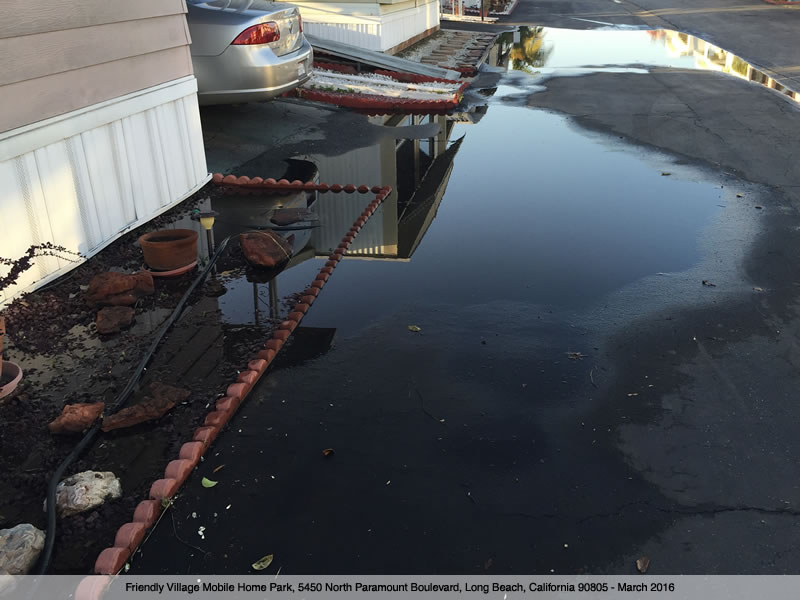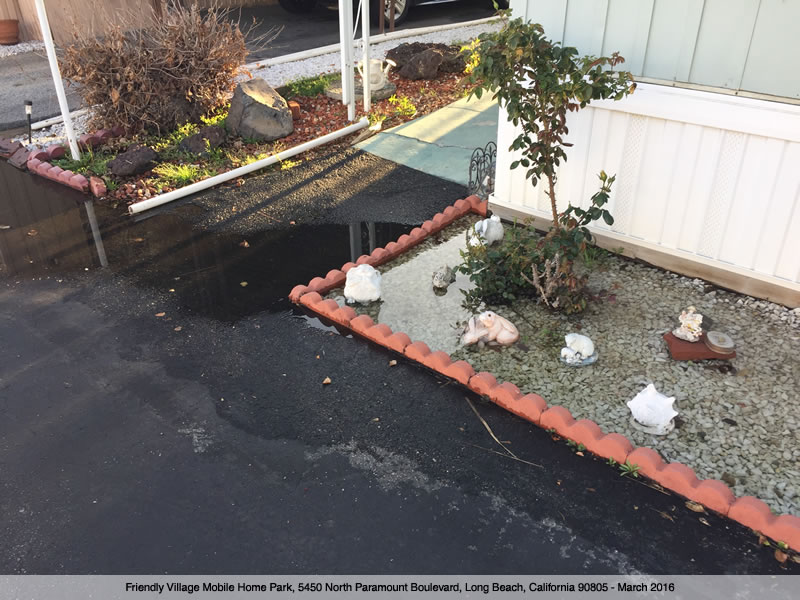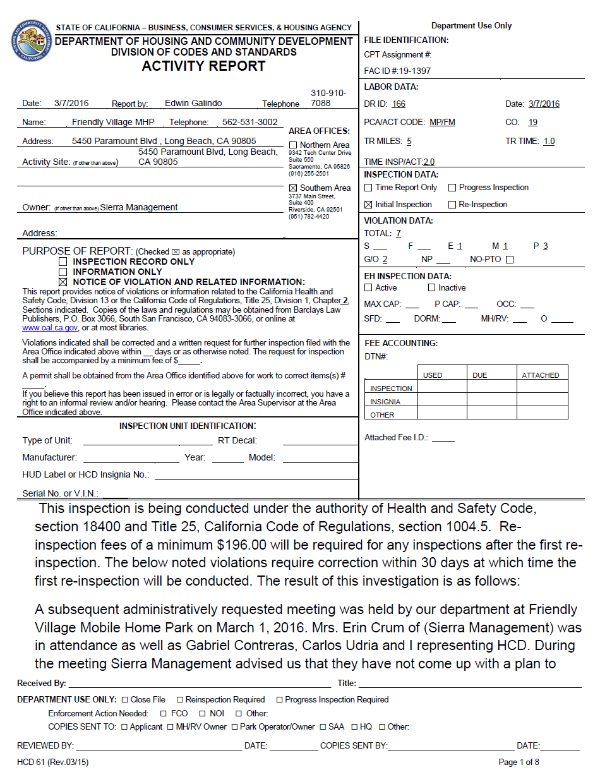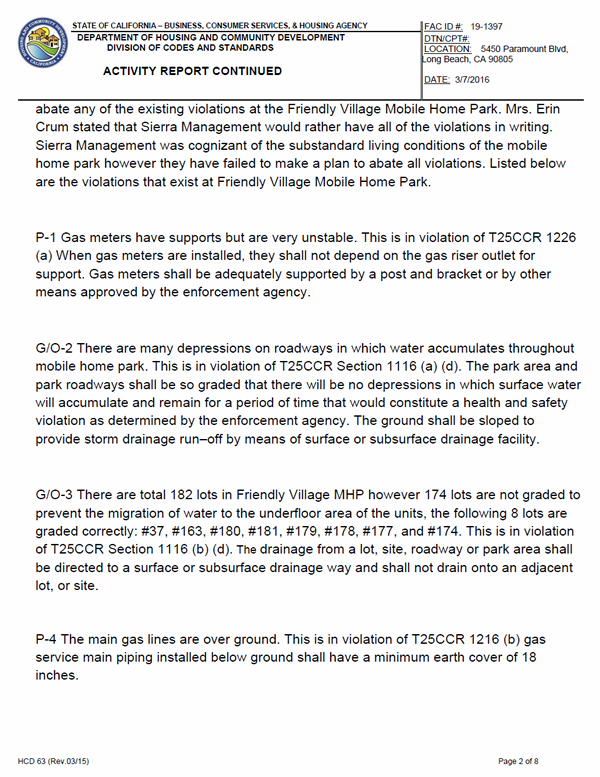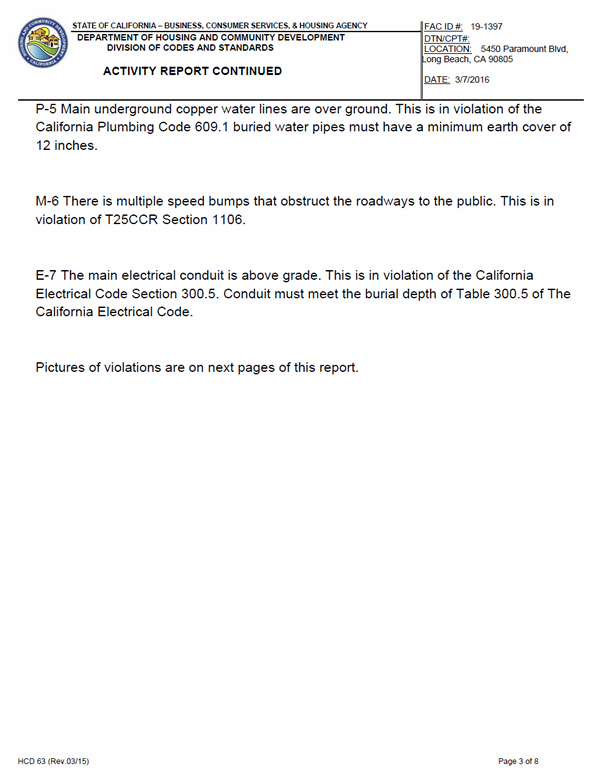Mobile Home Owner Tips
Mold in Mobile Homes and Your Health
Author Note Source 1: Content extracted from the California Department of Public Health (CDPH) website listed under: Programs > Indoor Air Quality Section > Indoor Mold
Molds are simple, microscopic organisms, present virtually everywhere, indoors and outdoors. Molds, along with mushrooms and yeasts, are fungi and are needed to break down dead plant and animal material and to recycle nutrients in the environment. Because molds grow by digesting organic material, they gradually destroy whatever they grow on. Molds can grow on surfaces or objects in buildings. Mold growth on surfaces can often be seen in the form of discoloration: frequently white, gray, brown, or black but also green and other colors. They may be visible or, if inside walls or building structures, not visible to you.
For molds to grow and reproduce, they need only a food source – any organic matter, such as leaves, wood, paper, or dust and moisture, which does not have to be liquid water but can be just a damp material or surface. Because organic matter is always available, moisture or dampness in buildings is thus the limiting factor determining whether mold can grow. Molds can usually grow whenever enough moisture is available.
Health Effects of Mold
Molds release tiny spores and even smaller particles that travel through the air. Everyone inhales some mold every day without apparent harm; however, molds can cause allergy, irritation or inflammation, or rarely, infection. Allergic reactions are the most well-recognized responses to inhaling mold spores, and some people are more sensitive to the effects of dampness mold. However, it is becoming increasingly clear that individuals not sensitized to mold may experience health effects.
We know that dampness and mold cause health effects both in allergic and non-allergic people. If you can see mold, water damage, or moisture, or smell mold, there is at least some increased health risk. The more extensive or severe the dampness and mold, the greater the risk of health effects. We do not know whether specific types of mold are responsible, or whether bacteria or chemical emissions related to dampness also cause some of the health problems.
The health effects consistently associated with indoor dampness and molds include:
- Causation of new asthma
- Asthma attacks in those who already have asthma
- Allergic rhinitis (sneezing, congested nose, or runny nose)
- Upper respiratory symptoms, such as stuffy or congested nose or sinuses, sore throat, or irritated nose or throat
- Lower respiratory symptoms, such as wheezing, difficulty breathing, shortness of breath, or cough
- Respiratory infections such as acute bronchitis
- Eye irritation (burning, watery, or reddened eyes)
- Eczema and skin rashes or irritation
Renters with Moldy or Damp Dwellings
Dampness in your home living spaces has long been listed as a condition making a home substandard to a code inspector. As of January 1, 2016, mold is also a condition that makes a home substandard. The owner of a rental property cited as by a local (city or county) code inspector substandard is required to repair the substandard condition.
The California Department of Consumer Affairs provides advice for tenants on mold issues in “California Tenants – A Guide to Residential Tenants’ and Landlords’ Rights and Responsibilities”:
… the presence of mold conditions in the rental unit that affect the livability of the unit or the health and safety of tenants" may be a way in which the implied habitability of a unit is violated and that a tenant may be able to claim a breach of the implied warranty on the basis of documented contamination.
What are the Symptoms of Mold Exposure in Mobile Homes?
Author Note Source 2: Content extracted from Mold Blogger – Symptoms of Household Mold Exposure. Content has been modified to be specific for mobile homes.
When a person feels ill they may not immediately consider the cause to be mold. Mold can and does cause serious health problems in many people. If you realize that you suffer from several or all of these symptoms below on a regular basis, it is advisable that you inspect your mobile home for mold. It is also wise to track how your symptoms occur.
If you leave your mobile home each day to work and notice that you feel better during the day, this can be a clear indicator that something in your mobile home is causing your distress. The same can be said if you travel and find yourself in better health then. Your mobile home shouldn’t make you sick – finding and treating the mold problem will ensure that doesn’t happen.
Exposure to mold has several symptoms including, but not limited to:
- Skin Rash: Although you may think that the skin can only become inflamed by direct contact with the mold this isn’t always the case. You can develop redness in your skin simply from inhaling the fumes from the mold.
- Eye Irritation: Mold can cause both redness and watering of the eyes. During the spring months, many people associate this with seasonal allergies when in actuality the cause is the mold within their mobile home or office.
- Headaches: Breathing in mold can cause headaches in some people. This is especially true of people who suffer with migraines. They are very sensitive to certain stimulants and mold can be one of them.
- Feeling Tired: Feeling tired for several days in a row, even when you are getting adequate sleep can be a symptom of mold exposure.
- Sore Throat: Experiencing a raw feeling when swallowing, or hoarseness when speaking, are both indicative of mold exposure. Spores can become lodged in the throat and irritate the sensitive membranes.
- Shortness of Breath: Breathing in mold spores can cause respiratory difficulties in some people. This is especially prevalent in those with allergies. They may even develop asthma or may have asthma and not realize that their asthma attacks are being trigged by the mold in their mobile homes.
- Runny Nose or Sinuses: If you are constantly reaching for a tissue to catch your runny nose this can also be a strong symptom of mold exposure. This can be triggered either by an allergy to the mold spores or the membranes of the nose become irritated by the spores. In either case, you may again misdiagnose yourself as having a head cold or seasonal allergies, but if the runny nose persists, consider that the source may indeed be mold.
- Bleeding Nose: Although this symptom is rare, it does occur. Some people are more sensitive to certain allergens and those offending irritants cause severe reactions. One of these reactions can be damage to the membranes of the nose resulting in regular bleeding. If this is happening to you, it can be caused by mold within your mobile home.
Friendly Village Mobile Home Park
5450 N Paramount Blvd, Long Beach, CA 90805
Owned by a Kort & Scott company and managed by Sierra Corporate Management.
Recent examples of standing water affecting mobile homes. Due to the park owner’s failure to maintain the park, the depressions in roadways, the sinking of mobile homes, have all led to standing water issues throughout the park. Many mobile home owners have standing water under their mobile homes which leads to mold and rot if not remediated immediately and properly.
In Mar 2016, the Department of Housing and Community Development (HCD) violated Sierra Corporate Management and 174 of the 182 lots in Friendly Village Mobile Home Park.
G/O-2 There are many depressions on roadways in which water accumulates throughout mobile home park. This is in violation of T25CCR Section 1116 (a) (d). The park area and park roadways shall be so graded that there will be no depressions in which surface water will accumulate and remain for a period of time that would constitute a health and safety violation as determined by the enforcement agency. The ground shall be sloped to provide storm drainage run–off by means of surface or subsurface drainage facility.
G/O-3 There are total 182 lots in Friendly Village MHP however 174 lots are not graded to prevent the migration of water to the underfloor area of the units, the following 8 lots are graded correctly: #37, #163, #180, #181, #179, #178, #177, and #174. This is in violation of T25CCR Section 1116 (b) (d). The drainage from a lot, site, roadway or park area shall be directed to a surface or subsurface drainage way and shall not drain onto an adjacent lot, or site.
HCD Activity Report
File Type: PDF, Pages: 8, File Size: 451KB
Friendly Village MHP Image Library
Sierra Corporate Management Lease Agreement
- DUTY TO INSPECT FOR MOLD: Homeowner agrees that prior to taking possession of the mobilehome on completion of sale, a home warranty inspection shall be conducted by buyer at buyer’s expense in order to investigate the conditions of the mobilehome including the presence of any mold. If buyer discovers the presence of any mold, it shall be the immediate duty of the buyer to remediate and remove any such discovered mold. Buyer shall thereafter at reasonable and recommended intervals cause to be made further periodic inspections, as necessary and appropriate, in order to ensure that the mobilehome shall be kept free of any mold. Buyer assumes all risk that any mold is present in or about the mobilehome at time of purchase. Buyer therefore agrees to indemnify, defend and hold management, owner and all agents and employees free and harmless from any claim, demand, suit, action, or liability (personal or bodily injury or property damage to any person or thing) caused or claimed to be caused by mold in, about or under a mobilehome or any accessory structure equipment, appliance or other property, or upon the homesite. Since management may not enter the mobilehome except under the circumstances allowed by the Mobilehome Residency Law, Tenant further warrants that the mobilehome is under the exclusive control of the Tenant and that management has no duties respecting prevention or treatment of mold within the mobilehome. If the occurrence of mold is observed by the management and tenant fails to properly remediate such condition, management may but has no duty to proceed with any available remedy to cause tenant to do so.
- TENANT RESPONSIBLE FOR MOISTURE, ACCUMULATED WATER, MOLD: Tenant shall maintain the homesite so water does not accumulate. Water must drain off in a fashion as to avoid runoff onto another homesite. The skirting shall not extend into the grade because moisture or water may accumulate under the mobilehome. All watering systems shall be installed, maintained and adjusted as necessary to avoid water run-off and standing water. Any berms shall be maintained to avoid the accumulation of water on the homesite. Any masonry skirting must contain sufficient ventilation to prevent accumulation of water under the mobilehome.
- Tenant warrants to maintain the mobilehome and areas under the mobilehome and space free of and from conditions which produce mold. Tenant is also responsible for mold cleanup. It is imperative to treat and remove all molds as if they are potentially harmful. The following are sources of indoor moisture that may cause problems: flooding, backed-up sewers, leaky roofs, humidifiers, mud or ice dams, damp crawl spaces, constant plumbing leaks, house plants – watering can generate large amounts of moisture, steam from cooking, shower/bath steam and leaks, wet clothes on indoor drying lines, clothes dryers vented indoors, combustion appliances (e.g. stoves) not exhausted to the outdoors. Homeowner should keep the humidity of the home down and ensure adequate ventilation inside the home (especially in the kitchen and bathroom).
- If you can see mold, or if there is an earthy or musty odor, you can assume you have a mold problem. Visible mold growth is found underneath materials where water has damaged surfaces, behind walls or inside the vapor barrier under the sub-floor of the mobilehome. Look for discoloration and leaching from wall surfaces. Mold cleanup is usually considered one of the housekeeping tasks of the private citizen and is such a responsibility of the tenant, along with roof and plumbing repairs, sweeping and house cleaning.
- Any discovery of mold in or about the mobilehome should be cleaned up promptly. When considering clean up of mold, verify the extent of the problem. It can be treated with bleach. Common dish soap will also aid in dissolving accumulated grease and dirt in the area.
- Tenant agrees to indemnify, defend and hold management, owner and all agents and employees free and harmless from any claim, demand, suit, action, or liability (personal or bodily injury or property damage to any person or thing) caused or claimed to be caused by mold in, about or under a mobilehome or any accessory structure equipment, appliance or other property, or upon the homesite. Tenant furthermore warrants that there is no mold of any kind upon any location on the homesite. Since management may not enter the mobilehome except under the circumstances allowed by the Mobilehome Residency Law, Tenant further warrants that the mobilehome is under the exclusive control of the Tenant and that management has no duties respecting prevention or treatment of mold within the mobilehome. If the occurrence of mold on the homesite is observed by the management and tenant fails to properly remediate such condition, management may proceed with any available remedy including a fourteen day notice as elsewhere provided for in tenant’s agreements with the management (with management cost therefore to be added as further rent payable together with rents and other charges on the first month, as billed, following such remediation); seek injunctive relief to compel compliance with mold remediation as hereby required; and / or terminate tenancy for failure to comply with this reasonable rule and regulation. Such remedies are cumulative and election of any remedy shall not preclude the resort to other remedies.
Law and Motion Rulings Discussion
RE: Friendly Village Mobile Home Park
- ACOSTA v. CITY OF LONG BEACH
- Case Number: BC591412
- Hearing Date: Thu, Dec 1, 2016
Moreover, in the unlawful detainer defense, tenants in "untenantable" units may choose not to pay rent (or withhold part of their rent) and raise breach of the warranty of habitability as an affirmative defense to an unlawful detainer for nonpayment of rent. See California Practice Guide, Landlord-Tenant, 3:80 (The Rutter Group 2016) (referencing Green v. Superior Court (Sumski) (1974) 10 Cal.3d 616, 635;).
